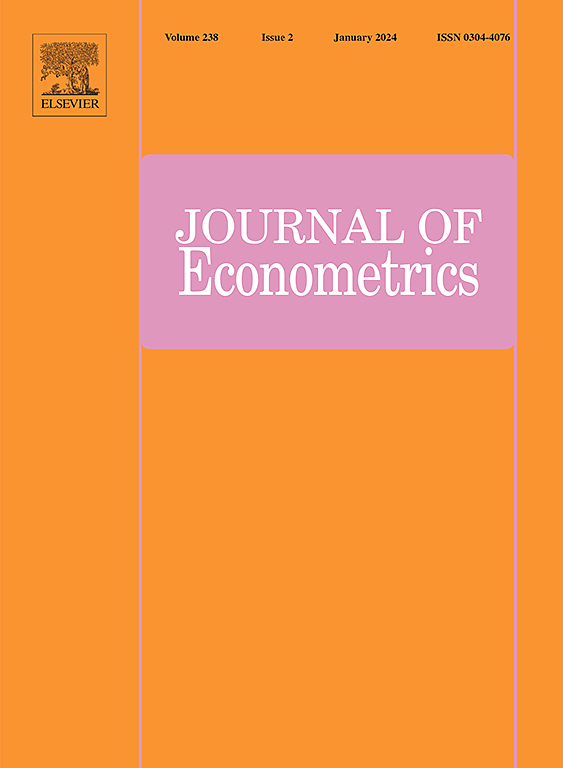High dimensional binary choice model with unknown heteroskedasticity or instrumental variables
IF 4
3区 经济学
Q1 ECONOMICS
引用次数: 0
Abstract
This paper proposes a new method for estimating high-dimensional binary choice models. We consider a semiparametric model that places no distributional assumptions on the error term, allows for heteroskedastic errors, and permits endogenous regressors. Our approaches extend the special regressor estimator originally proposed by Lewbel (2000). This estimator becomes impractical in high-dimensional settings due to the curse of dimensionality associated with high-dimensional conditional density estimation. To overcome this challenge, we introduce an innovative data-driven dimension reduction method for nonparametric kernel estimators, which constitutes the main contribution of this work. The method combines distance covariance-based screening with cross-validation (CV) procedures, making special regressor estimation feasible in high dimensions. Using this new feasible conditional density estimator, we address variable and moment (instrumental variable) selection problems for these models. We apply penalized least squares (LS) and generalized method of moments (GMM) estimators with an penalty. A comprehensive analysis of the oracle and asymptotic properties of these estimators is provided. Finally, through Monte Carlo simulations and an empirical study on the migration intentions of rural Chinese residents, we demonstrate the effectiveness of our proposed methods in finite sample settings.
具有未知异方差或工具变量的高维二元选择模型
提出了一种估计高维二元选择模型的新方法。我们考虑了一种半参数模型,它没有对误差项进行分布假设,允许异方差误差,并允许内生回归。我们的方法扩展了最初由Lewbel(2000)提出的特殊回归估计量。由于与高维条件密度估计相关的维数诅咒,该估计器在高维设置中变得不切实际。为了克服这一挑战,我们为非参数核估计器引入了一种创新的数据驱动降维方法,这是本工作的主要贡献。该方法将基于距离协方差的筛选与交叉验证(CV)程序相结合,使特殊回归估计在高维上可行。使用这种新的可行条件密度估计器,我们解决了这些模型的变量和矩(工具变量)选择问题。我们应用了惩罚最小二乘(LS)和广义矩量法(GMM)估计,并给出了L1惩罚。全面分析了这些估计量的预言性和渐近性质。最后,通过蒙特卡罗模拟和对中国农村居民迁移意愿的实证研究,我们证明了我们提出的方法在有限样本设置下的有效性。
本文章由计算机程序翻译,如有差异,请以英文原文为准。
求助全文
约1分钟内获得全文
求助全文
来源期刊

Journal of Econometrics
社会科学-数学跨学科应用
CiteScore
8.60
自引率
1.60%
发文量
220
审稿时长
3-8 weeks
期刊介绍:
The Journal of Econometrics serves as an outlet for important, high quality, new research in both theoretical and applied econometrics. The scope of the Journal includes papers dealing with identification, estimation, testing, decision, and prediction issues encountered in economic research. Classical Bayesian statistics, and machine learning methods, are decidedly within the range of the Journal''s interests. The Annals of Econometrics is a supplement to the Journal of Econometrics.
 求助内容:
求助内容: 应助结果提醒方式:
应助结果提醒方式:


